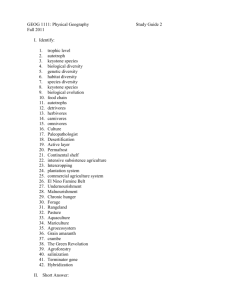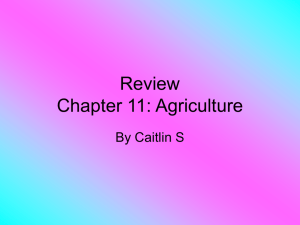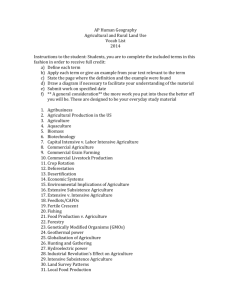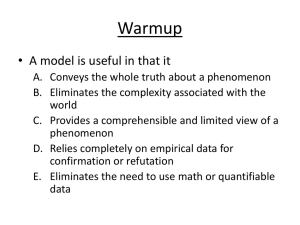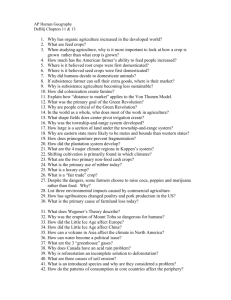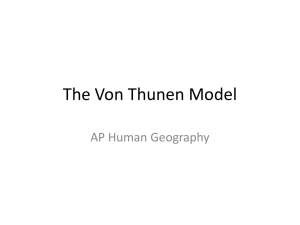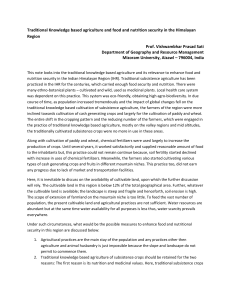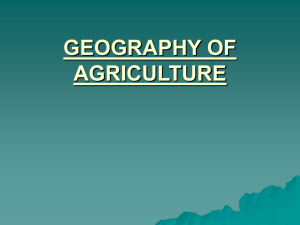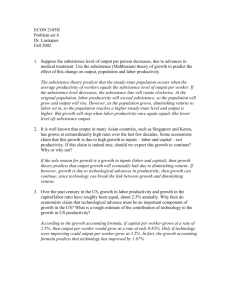Reading Guide for Chapter 11
advertisement
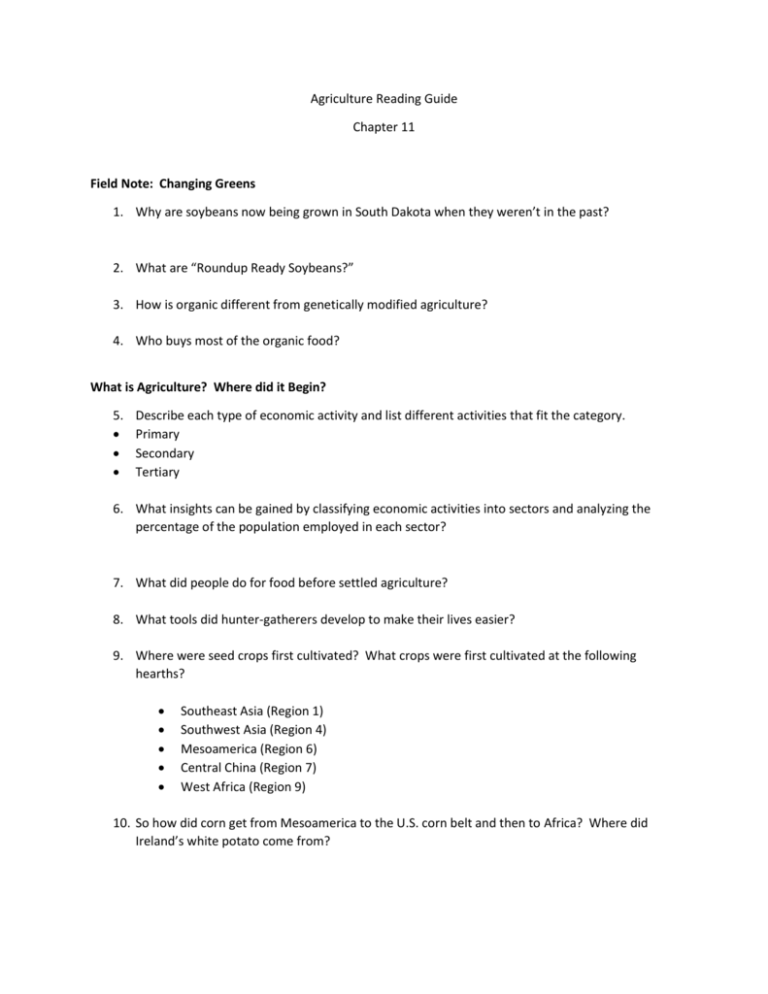
Agriculture Reading Guide Chapter 11 Field Note: Changing Greens 1. Why are soybeans now being grown in South Dakota when they weren’t in the past? 2. What are “Roundup Ready Soybeans?” 3. How is organic different from genetically modified agriculture? 4. Who buys most of the organic food? What is Agriculture? Where did it Begin? 5. Describe each type of economic activity and list different activities that fit the category. Primary Secondary Tertiary 6. What insights can be gained by classifying economic activities into sectors and analyzing the percentage of the population employed in each sector? 7. What did people do for food before settled agriculture? 8. What tools did hunter-gatherers develop to make their lives easier? 9. Where were seed crops first cultivated? What crops were first cultivated at the following hearths? Southeast Asia (Region 1) Southwest Asia (Region 4) Mesoamerica (Region 6) Central China (Region 7) West Africa (Region 9) 10. So how did corn get from Mesoamerica to the U.S. corn belt and then to Africa? Where did Ireland’s white potato come from? 11. Describe the development of animal domestication (briefly). 12. How did animal domestication help farmers? Subsistence Agriculture in the Modern World 13. Define subsistence agriculture. 14. Describe the subsistence lifestyle and state of mind. 15. Types of subsistence: (flip to page 377 after covering shifting cultivation) Shifting cultivationo Slash & burn o Describe how colonialism impacted subsistence farming Pastoral nomadism (get this info off the power point) Wet rice (intensive subsistence, use the power point for this) 16. (back to 360) How did colonial powers seek to “modernize” the economies of the colonies? What were some results of this? How did Agriculture Change with Industrialization? 17. Describe the Second Agricultural Revolution. Note the time period and the early hearth. 18. How did Johann Heinrich von Thunen explain the spatial pattern of agriculture he observed around his town of Rostock, Germany? 19. Describe what gets farmed in each of the four rings: Ring one Ring two Ring three Ring four 20. Why is the von Thunen model important today? 21. What was the Third Agricultural Revolution? Describe it and its results. Made sure to include both praise and criticism for the Green Revolution. 22. How widespread are GMO’s in the U.S.? Why do some people resist GM crops? 23. Which world region has the Green Revolution impacted the LEAST? 24. What is a cadastral system? Describe the following: Rectangular (Township & Range) Metes and Bounds Long-lot 25. What is primogeniture and how does it affect parcel size? 26. How are American farm landscapes different from those found in most of the rest of the world? 27. On what two features was Koppen’s climate classification system based? 28. Describe plantation agriculture. List a few crops that are typically grown on plantations. 29. How did the American-owned United Fruit Company protect its interests in Guatemala? Why, what was the threat they saw coming? 30. List two countries (besides the U.S.) that produce the following crops: Cotton Rubber Coffee Tea Illegal drugs (377) 31. Why are commercial grains and livestock found together in the United States, W. Russia, Brazil and Europe? 32. List three places known for ranching. 33. Describe Mediterranean agriculture and list three places besides the Mediterranean where it can be found. 34. How does commercial agriculture adversely impact the environment? 35. What health risks does commercial agriculture pose? 36. Why is the term Agribusiness often used to describe modern agriculture? 37. Explain why productive farmland is being lost in the U.S. and globally?
